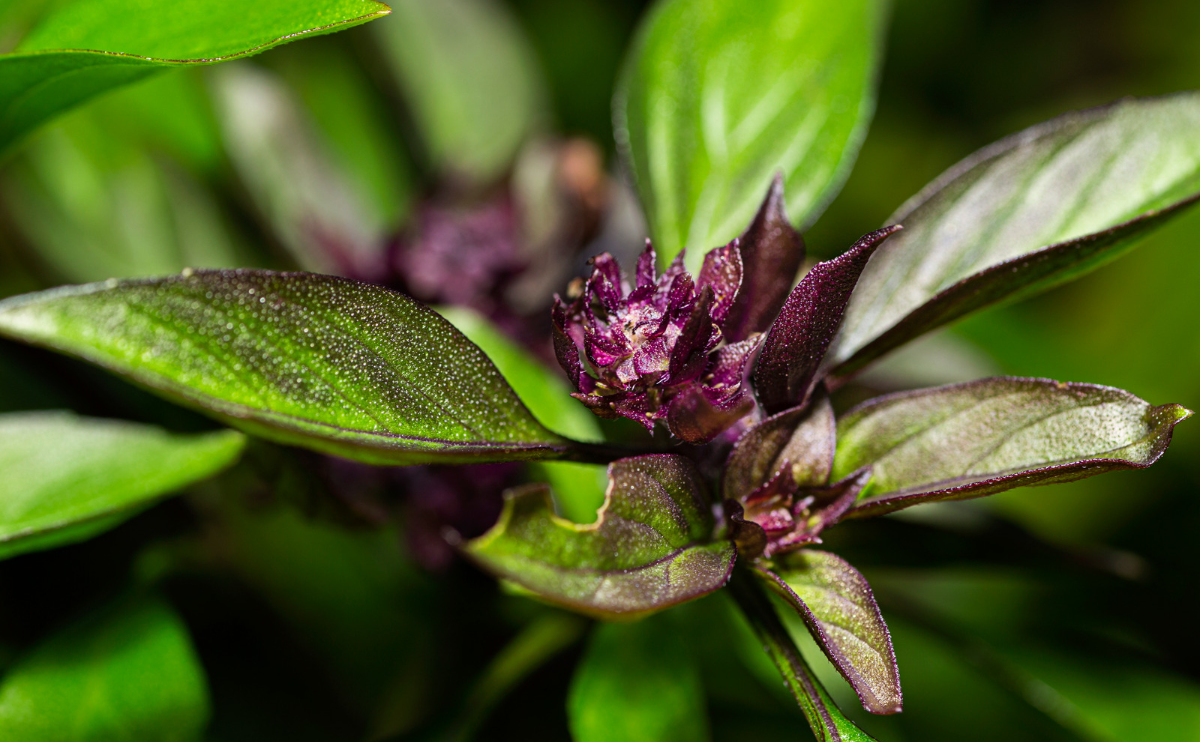Thai sweet basil is a popular herb in South Asian cooking, particularly Thai cuisine. Its beautiful plants are a show-stopper in the herb garden, too, with deep purple stems and flowers. The leaves are somewhat thicker in texture than sweet basil, and the flavor is mild and complex. Thai sweet basil’s flavor holds up well in cooking at high temperatures.

| Common Name | Thai Basil |
| Botanical Name | Lamiaceae (Labiatae) |
| Family | Mint |
| Plant Type | Perennial or annual herb |
| Size | 18–24 in. tall and wide |
| Sun Exposure | Full sun (likes some shade in very hot climates) |
| Soil Type | Somewhat rich soil |
| Soil pH | 5.1–8.5 (acidic to alkaline) |
| Bloom Time | June to frost |
| Hardiness Zones | 10–11 (grown as an annual elsewhere) |
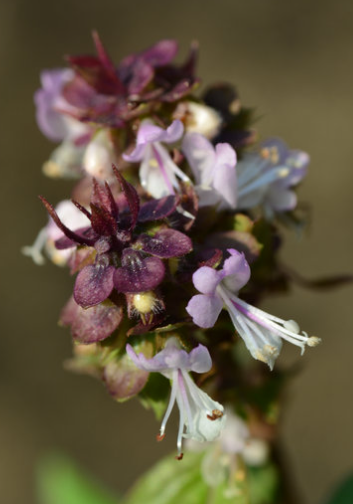
When to Plant?
This will be determined by your planting zone. There is a final frost date for each area. As a result, you can plan your gardening activities around this date. Check our Frost Dates Across North America: First & Last Frost Dates Chart. However, the date will not be the same for every plant.
How to Plant
Thai basil is a wonderful addition to a container garden. It thrives in well-drained soil, positioned in a sunny window. In a larger garden, plant basil among your tomatoes. It’s a one-stop shop for your next caprese salad.
Thai basil is easy to sow from seed and is relatively quick to germinate. When planting from seed, plant seeds about six weeks before the last frost. Thai basil is super sensitive to the cold, so whether you are transplanting seedlings from indoors or have plants in the ground, watch the early spring temperatures and cover if necessary. If you are planting a cutting or transplanting a seedling or smaller plant, make sure the ground temperature is at least 70 °F.
In addition to sowing Thai basil from seed, a cutting of basil will easily root when placed in water. Select a four-inch section of Thai basil that has not yet flowered. Roots will form within a week. Transplant the Thai basil directly into the garden or container once a healthy root system is apparent.
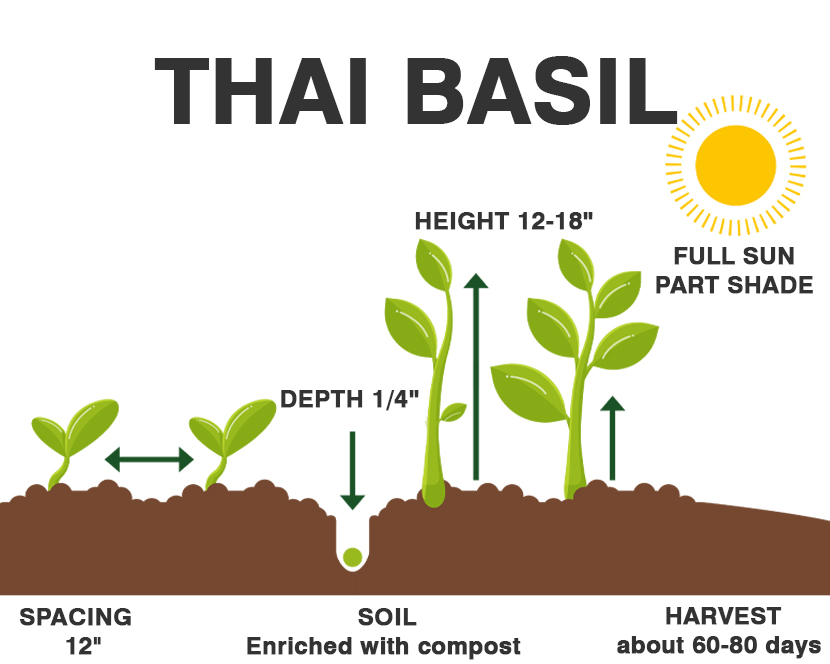
Plant basil among other herbs and vegetables with similar lighting and watering needs, like tomatoes or parsley. Some even say tomatoes taste better when they neighbor basil. Plant basil alongside chamomile, lettuce, peppers, and oregano. Keep a few pots of basil on back porch to deter mosquitoes.
How to Cultivate
Thai basil does its best in well-drained, moist soil with a neutral pH. Add rich compost to the soil at the beginning of the season. Not much more soil amendment is necessary. In fact, if the soil is too rich, Thai basil loses some of its flavor intensity.
Thai basil grows well in warm environments that receive about six hours of sun each day.
Give Thai basil water when the soil is dry to the touch, doing your best to water the plant at its base and not all over its leaves.
Depending upon the variety, Thai basil grows anywhere from 12 to 24 inches in height. Space basil plants 12 to 16 inches apart. If you’re limited on space or only grow in containers, consider spicy globe basil, which tends to form a small, mounding habit.
How to Harvest
It’s always better to harvest Thai basil before the plant flowers. If you don’t have time to harvest any leaves, just pinch off the flowering portion. The flowers are actually edible, but if you pinch them off, the plant can now direct its energy on growing tasty leaves. Also, be sure to only harvest up to 2/3 of the entire plant, so it can continue producing.
Hydroponics
Germination: Start by soaking Thai basil seeds in water for 24 hours to help with germination. Once the seeds have soaked, place them on a moist paper towel and cover with another moist paper towel. Put the paper towel with the seeds in a plastic bag and keep in a warm place for 3-7 days until the seeds germinate. Once the seeds have sprouted, you can transfer them to your hydroponic system.
pH range: Thai basil grows best in a pH range of 5.5-6.5. Make sure to regularly check and adjust the pH levels of your hydroponic solution as needed.
EC: The electrical conductivity (EC) for Thai basil should be maintained between 1.2-2.0 mS/cm. EC measures the amount of nutrients in your hydroponic solution. Keeping it within this range will ensure optimal growth.
PPM: The recommended PPM (parts per million) range for Thai basil is between 800-1400 ppm. PPM is another way to measure the nutrient concentration of your hydroponic solution. Be sure to adjust your nutrient solution accordingly.
Humidity: Thai basil grows best in a humid environment, with a range of 60-70% relative humidity. You can achieve this by using a humidifier or by placing a tray of water near your plants.
Light hours: Thai basil requires 12-16 hours of light per day. You can use grow lights to ensure your plants get enough light if you don’t have enough natural light in your growing area.
Temperature air: The optimal air temperature for Thai basil is between 20-28°C (68-82°F). Keep the growing area well-ventilated and avoid placing it near cold drafts or heat sources.
Temperature water: The water temperature for hydroponic Thai basil should be between 18-22°C (64-72°F). Avoid letting the water get too hot or too cold, as extreme temperatures can harm the plant.
That’s it! By following these guidelines, you should be able to successfully grow Thai basil hydroponically. Good luck!
Common Pests and Diseases
Cercospora leaf spot (Cercospora ocimicola)
Symptoms: Circular to irregular dark spots on leaves with light centers
Cause: Fungus
Management
Avoid overhead irrigation and splashing plants with water, instead water plants from the base and apply a layer of mulch around the plants to reduce water splash; remove and destroy any symptomatic leaves; minor infections can be controlled by spraying weekly with a fungicide containing potassium bicarbonate
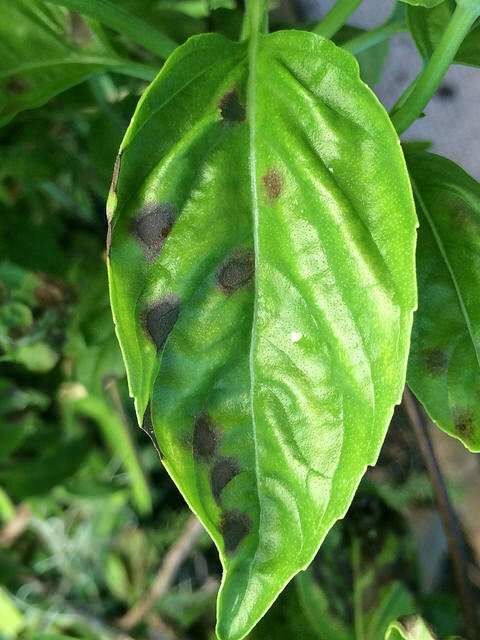
Downy mildew (Peronospora belbahrii)
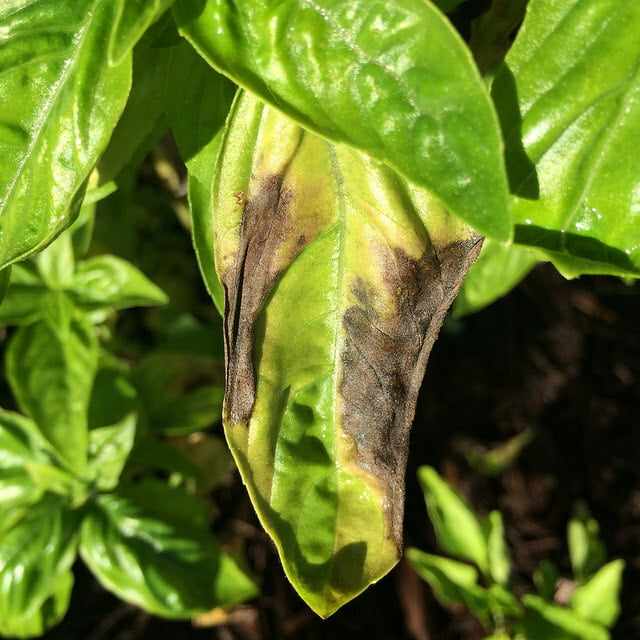
Symptoms: Yellowing leaves; discoloration often begins around the middle vein and spreads outwards; gray fuzzy or downy growth on the lower surface of the leaves; brown to black angular necrotic patches on the plant.
Cause: Fungus
Management
Grow tolerant varieties; apply protective fungicide; ensure good air circulation around greenhouse grown plants; use drip irrigation to avoid wetting foliage.

